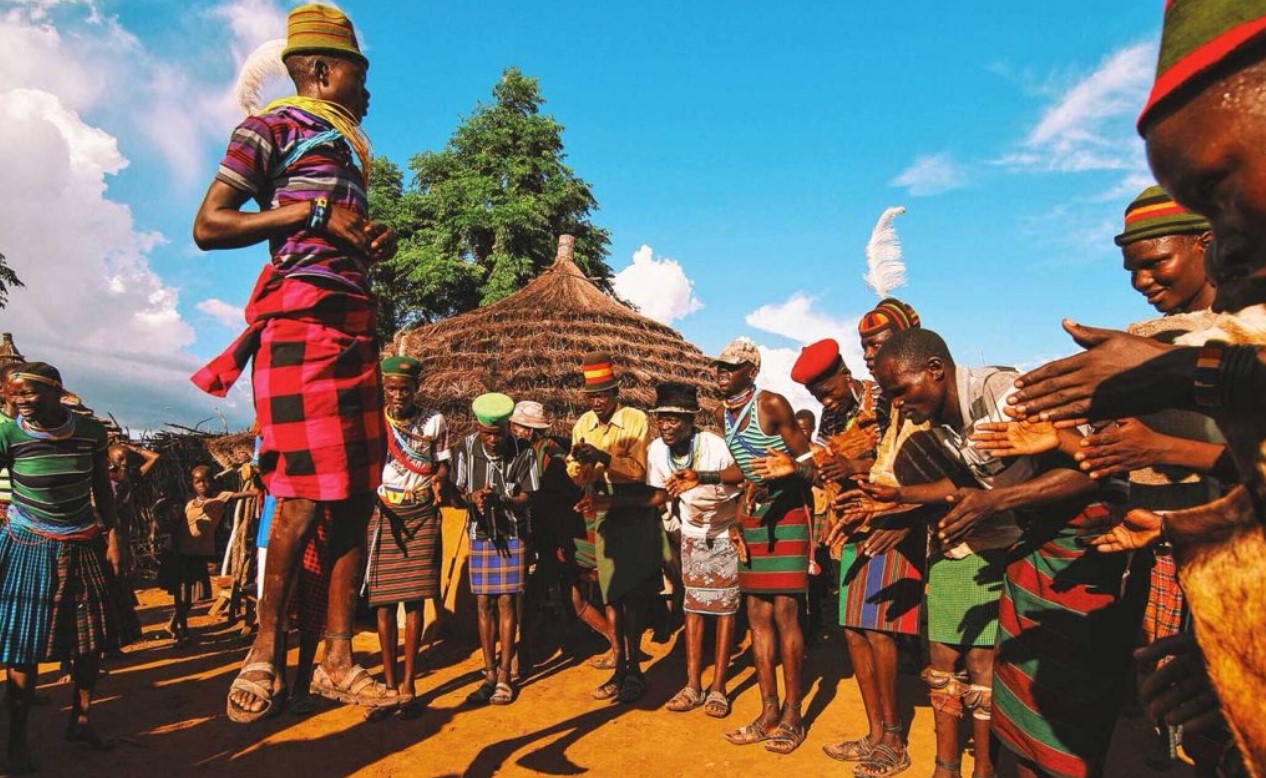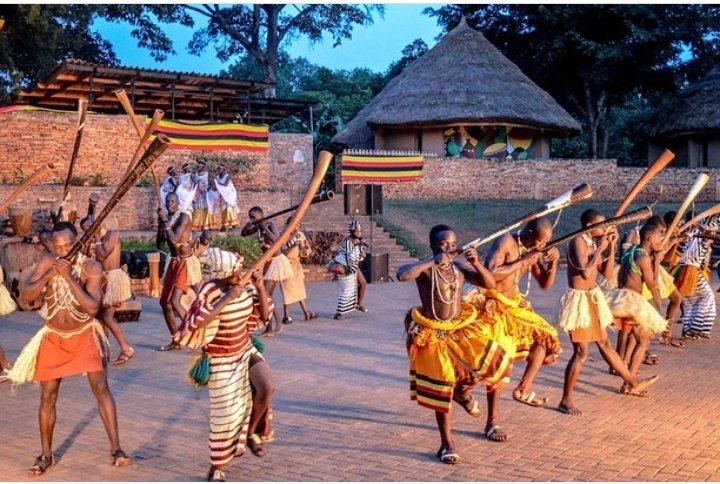
Discover Uganda’s Cultural Experiences| A Journey Through Traditions and Communities
Discover Uganda’s Cultural Experiences| A Journey Through Traditions and Communities. Uganda, widely known as the “Pearl of Africa,” is a land of striking contrasts, not only in its natural beauty but also in its rich cultural diversity. The country is home to over 50 different ethnic groups, each with its own unique customs, beliefs, and traditions. These cultural experiences offer visitors an opportunity to immerse themselves in the heartbeat of Uganda, far beyond its renowned wildlife safaris. From the well-preserved heritage of the Buganda Kingdom to the lesser-known traditions of the Alur and Banyankole, Uganda’s cultural tapestry offers something for every traveler looking to understand the spirit of the country.
In this detailed exploration, we will take a journey through some of Uganda’s most notable cultural experiences. Through guided community visits, storytelling, dance, and craft, visitors are provided with deep insight into the ways in which Uganda’s diverse communities maintain their traditions while embracing modernity. These encounters are not only enriching for tourists but also play a vital role in supporting local economies and preserving endangered cultures.

The Kingdom of Buganda: Traditional Monarchy and Cultural Heritage
One of Uganda’s most prominent cultural experiences is the exploration of the Buganda Kingdom, a significant traditional monarchy that has shaped much of the country’s political and social history. The Baganda, who make up the largest ethnic group in Uganda, reside primarily in the central region. The Kabaka (king) remains an important figure, symbolizing the unity and strength of the kingdom, and visitors to Buganda can see how this institution has influenced modern Ugandan governance. The Buganda people are known for their advanced social systems, particularly their clan system, which organizes social life and cultural responsibilities.
Visitors often begin their journey at the Kasubi Tombs, a UNESCO World Heritage Site and the burial grounds of Buganda kings. The intricate architecture of the tombs, made from organic materials such as reeds and bark cloth, is a testament to the Baganda’s craftsmanship. Another cultural landmark is the Lubiri Palace in Mengo, where travelers can view royal regalia and learn about the historical significance of Buganda’s monarchy through storytelling and music.
The Batwa Pygmies: Keepers of the Forest
The Batwa pygmies, one of Uganda’s indigenous communities, have a unique cultural heritage closely linked to the Bwindi Impenetrable Forest. Originally forest dwellers, the Batwa were displaced when the forest was declared a national park to protect mountain gorillas. Despite their displacement, the Batwa have retained much of their traditional knowledge of the forest and offer visitors a glimpse into their unique way of life. A Batwa cultural tour is not just a visit—it’s an opportunity to learn about their forest survival techniques, traditional medicines, and spiritual practices that have been passed down for generations.
Guests are guided through the forest by Batwa elders who share their deep knowledge of the land. Visitors learn about ancient hunting methods, plant identification for medicinal use, and the art of making fire without modern tools. The experience often ends with traditional Batwa songs and dances around a campfire, a powerful reminder of their deep connection to nature.
The Karamojong: Warriors of the Northeast
In Uganda’s northeastern region. The Karamojong people offer a fascinating look into a nomadic pastoralist culture that has survived for centuries. Known for their warrior traditions and cattle herding. The Karamojong are a resilient people who have adapted to the harsh semi-arid environment of Karamoja. A visit to the Karamojong community introduces travelers to their manyattas (traditional homesteads). Where they can learn about the significance of cattle in the community, participate in daily activities such as milking cows, and even engage in traditional dances.
Karamojong culture is deeply rooted in cattle herding, which plays a vital role in social status and community relationships. Visitors have the unique opportunity to witness the traditional dances of the Karamojong warriors. Which are vibrant, energetic, and reflect the community’s pride. These encounters not only provide insight into a lesser-known culture. But also highlight the efforts of the Karamojong to preserve their traditions in the face of modernization.
The Banyankole: The Long-Horned Cattle Keepers
The Banyankole people, residing in southwestern Uganda, are known for their close relationship with long-horned Ankole cattle, which are integral to their culture. The cattle are a source of pride and wealth, and their large horns are a unique sight in the region. Banyankole culture revolves around cattle, which are used in traditional ceremonies, dowry negotiations, and even social status determination. A visit to Ankole cattle farms offers tourists the chance to observe milking practices, learn about ghee preparation, and understand the importance of these majestic animals in Banyankole life.
In addition to their cattle heritage, the Banyankole are known for their traditional ceremonies, which often involve elaborate dances and rituals. Visitors can witness these performances during social events or arranged cultural tours. The Igongo Cultural Centre, located in the heart of Ankole, offers a deeper understanding of the Banyankole’s history and traditions, with exhibits on traditional attire, music, and the famous “Ekitaguriro” dance, which celebrates cattle and community.
The Bigodi Cultural Experience: A Sustainable Tourism Model
Located near Kibale National Park, the Bigodi Wetlands Sanctuary offers travelers an opportunity to explore community-based tourism with the Bigodi Cultural Experience. This initiative, driven by local residents, blends wildlife conservation with cultural education. Thus creating a sustainable tourism model that benefits both the environment and the local people.
During a visit to Bigodi, travelers embark on guided walks through the lush wetlands. Home to over 200 bird species and eight species of primates, including the rare L’Hoest’s monkey. However, the cultural aspect of the experience is just as captivating. Visitors have the chance to explore a local village. Where they can interact with the community, learn about traditional crafts such as basket weaving, and experience the preparation of local cuisine.

The Bagisu and the Imbalu Circumcision Ritual
The Bagisu people, also known as the Bamasaba. These are found on the slopes of Mount Elgon in eastern Uganda and are widely known for their Imbalu circumcision ceremony. This ritual, performed on young men as a rite of passage into adulthood, takes place every even year and is a central part of Bagisu culture. The Imbalu ceremony is a deeply spiritual and community-oriented event, involving traditional dances, songs, and prayers to ancestors. Therefore all aimed at preparing the boys for their transition into manhood.
Visitors to the region during the Imbalu season can witness the elaborate festivities that accompany the circumcision ritual. The ceremony is often preceded by vibrant processions, where young men dress in traditional regalia and are escorted by drummers and dancers. The community gathers to celebrate, reinforcing their unity and cultural pride. This experience offers a rare and profound insight into one of Uganda’s most sacred traditions.
The Basoga: Guardians of Kyabazinga
The Basoga people, who inhabit the eastern part of Uganda. Have a rich cultural heritage centered around their traditional leader, the Kyabazinga. Unlike other kingdoms in Uganda. The Basoga’s leadership structure is unique, as the Kyabazinga is elected from among the clan heads. The Basoga are known for their vibrant celebrations. Particularly the Busoga Cultural Festival, which showcases traditional music, dances, and storytelling. Therefore offering visitors a deep dive into the region’s rich cultural life.
The Basoga are also famous for their intricate crafts, including basket weaving and pottery. Visitors to Busoga can engage with local artisans and participate in hands-on workshops to learn about these traditional crafts. The vibrant music and dance of the Basoga, especially the energetic “Kadodi” dance, are central to their cultural identity and are often performed during significant ceremonies. Therefore making for a lively and immersive cultural experience.
The Acholi of Northern Uganda: Post-Conflict Cultural Revival
In the northern regions of Uganda. The Acholi people have a rich cultural history that has been revitalized after decades of conflict. Best known for their elaborate reconciliation ceremonies. The Acholi have developed a range of cultural practices aimed at fostering peace and social cohesion. One such practice is the “Mato Oput” ceremony. Where offenders seek forgiveness through symbolic acts of drinking a bitter herb concoction, symbolizing reconciliation.
Travelers visiting the Acholi region can also participate in traditional dance workshops and storytelling sessions. Where they learn about the significance of Acholi folklore. The “Larakaraka” dance, a traditional courtship dance performed with vibrant drumbeats, is a highlight of Acholi cultural tours. These experiences offer insight into the community’s resilience and the role of cultural preservation in post-conflict healing.
The Alur of West Nile: Music, Dance, and Oral Traditions
These people reside in the West Nile region. They offer visitors a unique cultural experience deeply rooted in music, dance, and oral traditions. The Alur are known for their distinctive “Adungu” music, played using a traditional stringed instrument similar to a harp. This music accompanies a variety of dances that mark significant life events, from births and weddings to harvest celebrations.
Visitors to the Alur communities are often treated to performances of the “Ding Ding” dance. An energetic dance that celebrates communal achievements and unity. The Alur are also skilled craftsmen, particularly in pottery and weaving. Visitors can learn these traditional arts during cultural tours. These encounters provide a window into the life of a people who have maintained their traditions for centuries. Despite being relatively isolated from mainstream Ugandan culture.

Conclusion: A Tapestry of Cultures
Uganda’s cultural diversity is as vast and captivating as its landscapes. With each community offering a unique window into its traditions, beliefs, and ways of life. From the ancient monarchies of Buganda to the nomadic pastoralists of Karamoja, and also from the spiritual rituals of the Bagisu to the post-conflict healing ceremonies of the Acholi. The country’s cultural experiences offer travelers a rich, immersive journey. These encounters not only highlight the importance of cultural preservation but also provide economic benefits to local communities. Thus ensuring that these traditions endure for future generations to appreciate.
Related Posts;






